|
Here we have another article on contract clauses from one of our freelancer lawyers and it is a fairly hot topic, given the potential outcome in the upcoming election in France. Specifically, this article contains a draft example clause to deal with a country leaving the Euro for you to include in your contracts. As always, it is worth restating that HPLpro is not a legal firm, and this article should not be taken as legal advice. It is important for you and your business to have experienced legal practitioners review your specific situation in relation to this article. Please feel free to request a freelance in-house lawyer from us if required. Do you, or your business, have a lot of work on the continent, specifically in Euro based countries? If so, it may be prudent for you to include language within your contracts that will address the possibility of one of the countries that you do business in dropping out of the Euro currency (either wilfully or otherwise). The legal principle to be aware of in this area is known as lex monetae – apologies for the Latin - which holds that a state chooses its own currency and, upon a country leaving a currency, contracts relating to that nation could potentially default to the new currency in that nation – this is known as redenomination risk and it is problematic due to the possibility for a catastrophic devaluation of the new currency. For example, if, following the French election, France did decide to leave the Euro and re-establish the Franc, that currency could devalue (along with the Euro) – if you are doing business in that country and your contract was based in Euros, you could suddenly find yourself being paid in a horribly devalued currency – the new Franc. One minute you are paid €100 (worth eg £100) the next minute you are paid 100NFF (New French Francs) (worth eg £1). It is, of course, possible that the new currency would gain value, but it is specifically the uncertainty for the business that is the concern here. It is further possible that such a devaluation would favour your company so you do need to consider your specific situation carefully. Ultimately, you should include wording in your contracts which attempts to give an element of consistency and certainty. The below draft wording could be a good starting place but, as with all things legal, you must engage legal advice for your specific circumstances. Additionally, be aware that even if you include such language in your contracts, legislation could act to override contractual clauses. The words in square brackets are for your lawyer to amend depending upon your situation. The first clause deals with a country exiting the Euro, the second clause deals with the Euro zone ceasing to exist (in which case the contract defaults to USD with the parties then having an opportunity to agree a suitable currency). a) Subject to sub-clause b), In the event that the Euro (for the purposes of this Agreement, Euro is defined as the official single currency of European Member States as at 1st January 2012) ceases to be the legal currency in [INSERT TERRITORY]: ("The Territory") the relevant currency for the Agreement will [remain the Euro/ revert to Sterling/ revert to USD] ; any reference to Euros in the Agreement will be read as references to [Euros/Pounds Sterling/USD] ; the prices hereunder will thereafter be calculated in [Euros/Pounds Sterling/USD] and, as at the date of the relevant invoice, converted into the new local currency of the Territory; any invoices or credit notes sent by either party thereafter will refer to [Euros/Pounds Sterling/USD]; this Agreement will thereafter be governed by the laws of [England and Wales]; such an event will, for the purposes of this Agreement, not be deemed an event of force majeure or outside of the reasonable control of either party hereto and the parties will take all such necessary steps to ensure that this clause is enforced and [NAME OF THE OTHER COMPANY] will be responsible, fully liable for, and will indemnify [NAME OF YOUR COMPANY] against, the effects of any legislation in the Territory which requires that all contracts formed with a counterparty in the Territory or being part-performed in the Territory be changed to a currency other than [Euros/Pounds Sterling/USD]. b) On the date that the Euro ceases to be legal tender in the majority of the Euro zone countries that were Euro zone countries as of January 1st 2012 (the “Exit Event”), all monetary sums expressed in Euros in this Agreement shall be converted into [US dollar] sums (calculated using the final exchange rate between US dollars and the Euro as published by the Bank of England). After the expiry of a six-month period following the Exit Event the parties will meet to discuss in good faith the appropriate currency for the Agreement. For the avoidance of doubt, the Exit Event will not be an event of force majeure. Again, the point of the clauses is to attempt to bring some certainty to what will be an uncertain situation at the time. We will follow this article up with one relating to Brexit and its impact on contracts shortly. Hope the above is helpful. The HPLpro Team
Comments
Some people find data protection a very dry (or even boring) subject. However, we would urge those people, particularly if you are in a position of management in a company, to bear with us, if only for this article, as data protection within the EU is just about to get a lot more interesting/serious – see the summary box below as to why. HPLpro can of course provide a freelance in-house lawyer to help you with your data protection requirements on a part time, short-term or project by project basis. We will post more articles on this subject as we get nearer to the implementation date. As always, it is worth restating that HPLpro is not a legal firm, and this article should not be taken as legal advice. It is important for you and your business to have experienced legal practitioners advise you upon the data protection regulations to ensure that you are adequately prepared. We will repeat this later in the article but it is worth saying up front as it will grab the most attention, the new fines for the most serious data protection breaches can be up to 4% of global turnover. Yes, that is turnover not profit. In terms of legislative 'bite', this means that EU data protection regulation now has the same teeth as EU competition law regulations. In other words, if you are not doing so already, it is now time to start taking this subject very seriously.
|
Summary
© Copyright protects creative works;
© it does not protect ideas; © there are exceptions to copyright; © some copyright protections are global; © copyright expires after a certain time; and © technology is changing faster than the law. |
As stated in our earlier article, copyright is essentially the protection of rights in creative works – think pictures, music, sculptures, graphics, films, books, and so on. In essence, it gives the holder of those rights the ability to prevent other people copying the work, or using the work in certain ways without permission. Importantly, copyright does not protect ideas – it protects the expression of those ideas, which need to exist in some tangible form. For example, the music created by a band who are jamming will not have copyright protection unless that music is recorded in some form. The same is true of a sculpture, copyright is only available once the sculpture has been created, rather than when it is an idea in the head of the sculptor.
However, it is important to distinguish between the rights in an expression of an idea and the rights in a physical object - copyright does not necessarily also mean that you own the physical object that 'holds' the copyright. For example, the band Gorillaz own the copyright to the song 'Superfast Jellyfish' but that does not equate to automatic ownership of every CD with the song on. The opposite is also true, you can own a CD with 'Superfast Jellyfish' on it without having the rights to commercially exploit that song.
"Hang on," we hear some of you cry, "I just recorded my 7 inch record of Captain Sensible's 'Happy Talk' onto a TDK Cassette tape. Am I going to go to prison?" Perhaps, for the music choice (Captain Sensible should go to prison for that video), but as for copyright, there are exceptions to copyright – which are covered later in this article – which mean that in some territories (such as the UK) you are able to copy the artistic work in certain circumstances – such as making copies for personal use. Interestingly, that change only occurred in the UK in 2014 and essentially reflected what the public were already doing with those copyright works; mixtapes made prior to 2014 in the UK were technically infringing copyright.
Berne baby, Berne
As noted in our previous article, the details of copyright change from country to country – copyright is not international - however, the Berne Convention, which was established in 1886 and has been gently amended over the years, creates certain minimum requirements of protection for the territories that have signed up to it (all 173 of them). The Convention holds that if you created a work which qualifies for protection in one of the contracting states, you get the same minimum level of protection in all of the others - and that protection is not conditional (in other words, it is automatic).
This means that, in respect of the beautiful photograph above, if it were to qualify for copyright protection in the UK, it would, for example, get copyright protection in Nigeria.
The Berne Convention also holds that there are two distinct elements to copyright – economic and moral rights – and those rights can be held by different persons or entities. Economic rights are what we normally think of when considering copyright – they grant the owner the ability to exploit the copyright for financial gain and prevent others from doing so – in other words the owner has the right to copy and sell (or license) the work. Moral rights are slightly different – they enable the author of the work to be recognised as the author; and grant the ability to prevent the work being modified in a way that would be prejudicial to the honour or reputation of the author. In many 'western' countries, moral rights are seen as the ugly cousin of economic rights and can even be waived in certain territories, such as the UK. the waiver of moral rights is, however, considered by some to be controversial as, if there is an imbalance in negotiating power, an artist may be unduly 'encouraged' to waive those rights. On the other hand, a company will simply use a different freelancer should the proposed artist object, hence the controversy. Perhaps a reasonable approach to take would be to suggest that, if the artist is merely bringing into existence somebody else's vision, then they should not object to waiving moral rights. Of course, if the work of art is solely the vision of the artist, it would seem unreasonable to expect the artist to waive their moral rights.
The Berne Convention also holds that there are two distinct elements to copyright – economic and moral rights – and those rights can be held by different persons or entities. Economic rights are what we normally think of when considering copyright – they grant the owner the ability to exploit the copyright for financial gain and prevent others from doing so – in other words the owner has the right to copy and sell (or license) the work. Moral rights are slightly different – they enable the author of the work to be recognised as the author; and grant the ability to prevent the work being modified in a way that would be prejudicial to the honour or reputation of the author. In many 'western' countries, moral rights are seen as the ugly cousin of economic rights and can even be waived in certain territories, such as the UK. the waiver of moral rights is, however, considered by some to be controversial as, if there is an imbalance in negotiating power, an artist may be unduly 'encouraged' to waive those rights. On the other hand, a company will simply use a different freelancer should the proposed artist object, hence the controversy. Perhaps a reasonable approach to take would be to suggest that, if the artist is merely bringing into existence somebody else's vision, then they should not object to waiving moral rights. Of course, if the work of art is solely the vision of the artist, it would seem unreasonable to expect the artist to waive their moral rights.
As stated above, copyright normally arises automatically upon the creation of the artistic work. There is not a register of copyright works in the UK – when you create it, copyright arises immediately and automatically. There is however a register of copyright works in the US and, in general, you cannot sue for copyright infringement in the US unless your copyright is registered at the US Copyright Office. The good news is that you can register the copyright yourself at the US Copyright Office.
We mentioned in our previous article that copyright only last for a period of time and then expires. The Berne Convention states that the minimum period is the life of the author and then a period of 50 years following the death of the author. In many countries, that period is extended to 70 years plus the life of the author.
Exceptions to the rule
So what can a non-copyright holder do with an artistic work that is protected by copyright?
Good question. In many territories, there are exceptions to copyright (although these vary greatly from country to country). Common exceptions are for research purposes, personal use, private study, criticism/review, teaching, parody and so on. Most of the exceptions deal with permissible reproduction of the copyright work in ways which do not have a commercial purpose, but that is not always necessarily the case – copyright infringement can take place even if money is not being exchanged.
Another way of using a copyright protected work without infringing it is to obtain a license to do so. That license could either be general (in other words, everybody is offered the same license on the same terms), or specific to you as an individual (such as in the case of music sample clearances as detailed below). These licenses impact upon all of us more often that we may realise, for example, computer software licenses are likely to be the general copyright licenses that most people will encounter in their daily lives. We know you've all clicked 'I agree' without reading the accompanying license at some stage or another. Another common license in the UK is the use of a radio in a public place, such as an office, which is also likely to require a copyright license.
Good question. In many territories, there are exceptions to copyright (although these vary greatly from country to country). Common exceptions are for research purposes, personal use, private study, criticism/review, teaching, parody and so on. Most of the exceptions deal with permissible reproduction of the copyright work in ways which do not have a commercial purpose, but that is not always necessarily the case – copyright infringement can take place even if money is not being exchanged.
Another way of using a copyright protected work without infringing it is to obtain a license to do so. That license could either be general (in other words, everybody is offered the same license on the same terms), or specific to you as an individual (such as in the case of music sample clearances as detailed below). These licenses impact upon all of us more often that we may realise, for example, computer software licenses are likely to be the general copyright licenses that most people will encounter in their daily lives. We know you've all clicked 'I agree' without reading the accompanying license at some stage or another. Another common license in the UK is the use of a radio in a public place, such as an office, which is also likely to require a copyright license.
Copyright Notice
You may recognise the copyright symbol - ©. It is not necessary to use but indicates to the world that you consider the work to be protectable and yours. You may have also seen dates feature after a copyright notice – this gives the viewer the knowledge of when a copyright piece was first created or published. In the years prior to 2000 a particular global treaty required the words 'All Rights Reserved' to be written on the copyright work in order to be able to have protection but that is no longer the case – however, you will see that it is almost always still used in literature and on websites – we still use it at the footer of most of our webpages – such as on our home page - for example. Old habits die hard, although it is good practice to nevertheless use a copyright notice. An example of a simple notice is: "© Copyright HPLpro Limited 2017. All Rights reserved. "
The Law moves slowly...
We have dealt with some of the main elements of copyright in the preceding paragraphs. Now let us look at how the law is interacting with the modern world when it comes to copyright. We made reference to animal selfies in our earlier article which have recently been held by a court in the US to not attract copyright – animal art has been a thing since the 1950's if not before, so it goes to show how slowly the law gets around to considering new developments. Speaking of non-human artistic works, presumably the same applies to AI meaning that, when the AI in your Google piano gets advanced enough to invent its own music, that music would not give rise to copyright protection. Which brings us neatly on to technology.
The World Intellectual Property Organisation – which is the body that manages the Berne Convention – is also responsible for the 1996 WIPO Copyright Treaty. This treaty is a special agreement under the Berne Convention that deals with digital elements of copyright protection in relation to computer programmes and databases.
Given that computer programmes and databases existed for decades before the WCT treaty it again goes to show how slow legislation moves in respect of keeping up with the pace of technological change; perhaps necessarily, given the pace of technology, legislation is behind the curve when it comes to the modern digital world. Legislators, lawyers and courts often find themselves trying to shoehorn matters relating to new technology into old laws.
What would the authors of the Berne Convention make of a live broadcast of a band on Google Hangouts, where the band are all in different countries (some of which being non-WCT and non-Berne countries) – where the drummer is Biff-Biff the monkey, the bassist is Ceolopithia, a character in World of Warcraft (being played by a real human), an MIT Artificial Intelligence, Robot X1, is playing the guitar, Beardy Man is on vocals and samples from various bands from the 1980s are being mixed in by Dr Dre . The performance is being watched, recorded and broadcast on a multitude of different devices – including on a big screen at Time Square in New York (with the crowd recording that broadcast on their phones). Additionally, the score for the music is being automatically ascribed by a Google AI app (we may have just invented that) on at least a million Samsung phones. Finally, there is no contract between the band as they have never met and are just jamming. What would the law make of that? Either way, we want that album. What would the band be called, we wonder…
What would the authors of the Berne Convention make of a live broadcast of a band on Google Hangouts, where the band are all in different countries (some of which being non-WCT and non-Berne countries) – where the drummer is Biff-Biff the monkey, the bassist is Ceolopithia, a character in World of Warcraft (being played by a real human), an MIT Artificial Intelligence, Robot X1, is playing the guitar, Beardy Man is on vocals and samples from various bands from the 1980s are being mixed in by Dr Dre . The performance is being watched, recorded and broadcast on a multitude of different devices – including on a big screen at Time Square in New York (with the crowd recording that broadcast on their phones). Additionally, the score for the music is being automatically ascribed by a Google AI app (we may have just invented that) on at least a million Samsung phones. Finally, there is no contract between the band as they have never met and are just jamming. What would the law make of that? Either way, we want that album. What would the band be called, we wonder…
…but The Internet moves so quickly
Never one to hang around, The Internet is trying to come up with its own solutions to the above conundrums, primarily taking the approach that everyone can use everything. In particular, the Creative Commons licenses enable users to copy, edit, alter, update and generally fiddle with the creative works which the creators have licensed – for free - for that purpose, all within the bounds of copyright laws. The Creative Commons ethos is, "when we share, everyone wins." Interestingly, a key factor of the CC license is that of accreditation - you can use the author's work provided that you also state where the work originally came from.
Of course, The Internet also has a habit of ignoring rules and laws altogether.
In many ways, The Internet has collided head on with copyright, particularly in relation to films, music and software. The fallacy that a person can sit behind their computer screen and nobody can 'see' what they are doing is like that of a child with a box on their head thinking that nobody can see them.
The reality is more one of cost – whilst online copyright infringement can usually be traced, it is unlikely to be punished, simply due to the disproportionate cost involved; pursuing a person who has downloaded a Dizzee Rascal album in breach of copyright will cost more than the price of the album itself. Additionally, legal systems would not be able to cope with the large numbers of claims that would arise. Finally, depending upon the territory, the copyright holder will also likely need to show a loss to base their claim on. If the Dizzee Rascal downloader bought a copy of the album when challenged there would likely be no basis for a claim. The complaining party also has to have the right to bring the case, as Osama Fahmy found when he brought a US copyright claim against Jay-Z for the use of some of his uncles' music in the 1999 song, 'Big Pimpin’.'
There is no question that with the march of the online world the approach to copyright of a significant proportion of the population has changed, its importance has perhaps diminished in the eyes of some. Nevertheless, it is perhaps unfair to solely blame The Internet; piracy, the glamourous name given to unauthorised reproduction of copyright works, had been around for decades prior to The Internet. Many readers of this article may recall making mixtapes and perhaps going on to sell them at school. The financial element is important here; whilst the law perhaps does not reflect it, in practice, copyright holders seem to be targeting those persons and entities who are making money out of copyright infringement or who are enabling others to commit copyright infringement rather than pursuing the bedroom Dizzee Rascal downloaders. Further, plagiarism (the practice of copying someone's work and passing it of as your own - synonymous with copyright theft) has been around for centuries; it is arguably a little easier to commit plagiary with the advent of The Internet but also a little harder to get away with.
Frankly, it is getting physically easier to copy stuff; we can even print plastic copies of virtually anything in our own homes. Additionally, the line between what is and what is not copyright infringement is becoming increasingly blurred given the increasing sophistication of technology and it is all happening at a pace which outstrips the law, cases and legislation. The use of samples in music has been a phenomenon for many decades but could technically be an infringement of copyright, notwithstanding the result of the 'Big Pimpin'' case highlighted above. In fact, there have been numerous cases since the 1990s (way too many to list in this article) , particularly in the US, on this subject. This all means that advice from lawyers is therefore becoming an increasingly valuable commodity when it comes to copyright and copyright infringement and avoiding court cases.
Does that mean however, that an artist should talk to their lawyer prior to letting their creative juices flow? Whilst that is something for each individual and entity to decide for themselves, it would be prudent to keep your freelance HPLpro lawyer close to hand when your company starts producing copyright works, just in case. Lawyers can be creative too don't you know.
Feel free to comment on how copyright operates in your specific country.
We hope you found the above useful; let us know if you have any other request for articles. Stay tuned for other articles on IP, contracts and other interesting legal things!
The HPLpro team
We hope you found the above useful; let us know if you have any other request for articles. Stay tuned for other articles on IP, contracts and other interesting legal things!
The HPLpro team
In the latest of articles from our freelancers on certain areas of law, we tackle the basics of intellectual property (also called IP): what it is, what types of IP there are and some helpful things to think about.
As always, it is worth restating that HPLpro is not a legal firm, and this article should not be taken as legal advice. It is important for you and your business to have experienced legal practitioners review your business ideas and intellectual property portfolio to ensure that they adequately meet your needs. Please feel free to request a freelance in-house lawyer from us if required.
As always, it is worth restating that HPLpro is not a legal firm, and this article should not be taken as legal advice. It is important for you and your business to have experienced legal practitioners review your business ideas and intellectual property portfolio to ensure that they adequately meet your needs. Please feel free to request a freelance in-house lawyer from us if required.
What is IP?
Intellectual property is an idea that has been turned into something; ideas on their own are not intellectual property. So, for example, you may think of an idea for a great painting which, in itself, is not intellectual property. However, as soon as you paint the painting you have created some intellectual property!
There are various types of intellectual property that you will have heard of (copyright, patents, trademarks, design rights, and so on) and we will detail those below. How these types of intellectual property are dealt with can change from country to country and some even have global agreements on how they work. Some types of intellectual property arise automatically and immediately upon creation whereas other types of intellectual property need to be registered – at a cost - with one or several governmental bodies in order to be protected. This article will focus on IP generally rather than the rules in any specific territory or country – it is always worthwhile engaging experts in the relevant area to ensure that you protected.
IP can be owned by individuals and companies and can be transferred from person to person or company to company; you do not need to be the creator of the IP to be the owner. IP can also be licensed from one party to another, so, in certain circumstances you can use someone else's IP under a license agreement. You can also have joint owners of IP.
It is worth bearing in mind that most IP only exists for a certain period of time (although in some instances those periods of time can be extended or renewed).
There are various types of intellectual property that you will have heard of (copyright, patents, trademarks, design rights, and so on) and we will detail those below. How these types of intellectual property are dealt with can change from country to country and some even have global agreements on how they work. Some types of intellectual property arise automatically and immediately upon creation whereas other types of intellectual property need to be registered – at a cost - with one or several governmental bodies in order to be protected. This article will focus on IP generally rather than the rules in any specific territory or country – it is always worthwhile engaging experts in the relevant area to ensure that you protected.
IP can be owned by individuals and companies and can be transferred from person to person or company to company; you do not need to be the creator of the IP to be the owner. IP can also be licensed from one party to another, so, in certain circumstances you can use someone else's IP under a license agreement. You can also have joint owners of IP.
It is worth bearing in mind that most IP only exists for a certain period of time (although in some instances those periods of time can be extended or renewed).
|
If you have an idea but have not yet turned it into actual IP – be sure to keep that information secret! As stated in this article, an idea on its own is not intellectual property – and you may find that you lose the ability to protect your idea if you don't keep it secret. If you need to tell other people or companies about your idea, make sure you use an NDA (aka confidentiality agreement) beforehand – see our explainer on NDAs and our free NDA builder.
|
Copyright
Copyright is essentially the protection of creative works – it protects the expression of an idea. So, for example paintings can be protected by copyright, as can statues, photographs, novels, drawings, computer programmes and so on. The key however is that these elements need to exist in the real world and need to have an element of creativity – meaning that, for example, the book needs to have actually been written down for it to attract copyright protection. The protection that copyright grants is the ability to stop someone else copying your work, adapting it, distributing it, or performing it without permission (if it is a play or musical score). We will look at copyright in more detail in our next article.
|
Patents
Patents deal with inventions and protect how and when other people can use that invention. A significant consideration with regard to patents is that they are published and are able to be freely viewed by everyone when they are registered. That means that somebody could take your invention and improve it and/or do it differently all potentially without infringing your patent. So, if you have something that is highly confidential, you may not want to have it published as a patent. Further, patents exist for a certain period of time, normally 20 years, after which time they pass into the public domain – so again, if you want more than 20 years of protection you may want to consider keeping the information a secret rather than registering a patent. However, to do so would be counteractive to the general philosophy of patents which is to encourage the development and sharing of new ideas. As with copyright, we will take a further look at patents in a later article.
| When hiring freelancers of any sort to turn your ideas into actual things – web designer, software programmer, artist, writer - remember to include language about IP ownership and to transfer that IP over to you or your company in the contract that you have with the freelancer. Depending upon where you are in the world, failure to do so could result in the IP being owned by the freelancer! If we get enough interest, we may ask one of our freelancers to create a free freelance template for download. Also note that if you are an employer, you should include appropriate language in your employment contracts on IP ownership. |
Trademarks
Trademarks protect branding which is used in relation to trade (and all of the trademarks in the above picture are used without permission - no challenge to their status intended.). Normally a trademark will be a word or a logo but in some territories worldwide you can also claim colours or smells as trademarks. A trademark is therefore a logo, word or other element which identifies the source of that logo or mark for the economic benefit of the owner but also for the benefit of consumers at large; if everyone could use the word Microsoft in respect of computer programmes that they were selling, users would have no idea of the origin, and therefore the quality (or lack of), of that software.
Trademarks can either be registered or unregistered depending upon the territory and the owner of the mark will have different remedies available depending upon the registration. Further, to complicate things slightly, trademarks exist in 'classes' which is a way of dividing those marks into categories of use. For example, Class 34 refers to tobacco and articles for smoking. That means that HPLpro could own a trademark for the word 'Cobra' in class 34 and that mark is not likely to infringe a 'Cobra' word trademark in class 39 – transport.
As with the other types of IP we will pen a further article on this subject at a later date.
Trademarks can either be registered or unregistered depending upon the territory and the owner of the mark will have different remedies available depending upon the registration. Further, to complicate things slightly, trademarks exist in 'classes' which is a way of dividing those marks into categories of use. For example, Class 34 refers to tobacco and articles for smoking. That means that HPLpro could own a trademark for the word 'Cobra' in class 34 and that mark is not likely to infringe a 'Cobra' word trademark in class 39 – transport.
As with the other types of IP we will pen a further article on this subject at a later date.
Design rights/ Registered designs/industrial designs
| This little bundle of IP rights varies greatly depending upon the country but in general they protect the aesthetics of an industrial article, particularly the design of that article. They may help you to prevent someone making, selling or distributing infringing articles. The classic design of an Alessi kettle for example may be the perfect subject for a registered design. |
Other IP
There are a few other elements which are sometimes considered to be intellectual property and are worthy of mention:
Trade secrets – these are confidential pieces of information which relate to the most vital elements of a business and normally they will be contained in the heads of only a few people worldwide. The Coca Cola recipe is rumoured to be one such trade secret.
Domain names – domain names can be considered to be intellectual property in that they can be owned and traded and are not physical items as such. Along with other IP elements, businesses should consider domains names as part of their intellectual property strategy.
Protected Geographical Location rights – the ability to refer to ther origin of a product or service can have real world value – Melton Mowbray pork pies for example. Although geographical locations are rarely owned by one business, nevertheless they can be exploited only by businesses operating in that area. Only pork pies made in the Melton Mowbray area can use such a reference on their packaging – even if they are identical in every way to one made just outside the area (aficionados will however tell you that the MM Pork Pie is distinctly different to all others).
Trade secrets – these are confidential pieces of information which relate to the most vital elements of a business and normally they will be contained in the heads of only a few people worldwide. The Coca Cola recipe is rumoured to be one such trade secret.
Domain names – domain names can be considered to be intellectual property in that they can be owned and traded and are not physical items as such. Along with other IP elements, businesses should consider domains names as part of their intellectual property strategy.
Protected Geographical Location rights – the ability to refer to ther origin of a product or service can have real world value – Melton Mowbray pork pies for example. Although geographical locations are rarely owned by one business, nevertheless they can be exploited only by businesses operating in that area. Only pork pies made in the Melton Mowbray area can use such a reference on their packaging – even if they are identical in every way to one made just outside the area (aficionados will however tell you that the MM Pork Pie is distinctly different to all others).
Company names – finally a company name is intellectual property of a sort and it is worth bearing in mind that just because you own the company name does not mean that you own a trademark with the same name nor does it give you automatic rights to a domain name.
Hope you found the above useful. We will tackle the specific elements mentioned above in later articles, so keep tuned!
The HPLpro team
The HPLpro team
Author
HPLpro
Archives
June 2017
May 2017
April 2017
March 2017
Categories
All
Article
Contracts
Data Protection
Downloads
Explainers
Intellectual Property

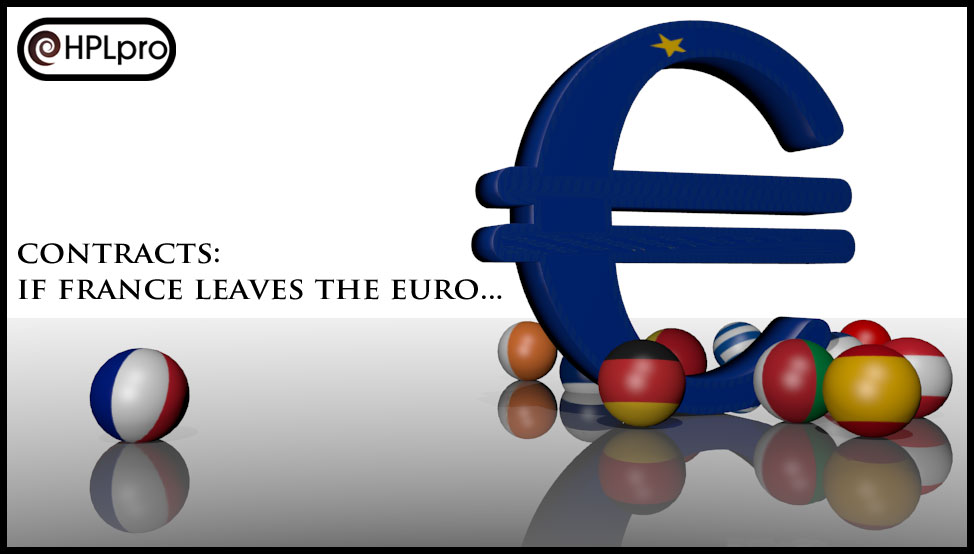
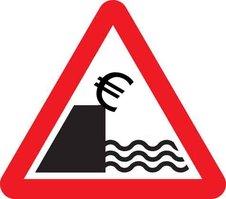
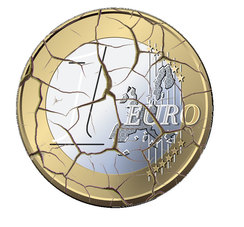
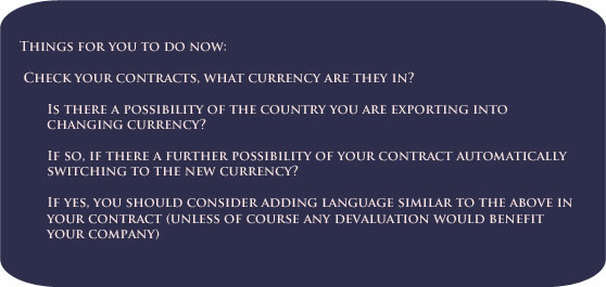
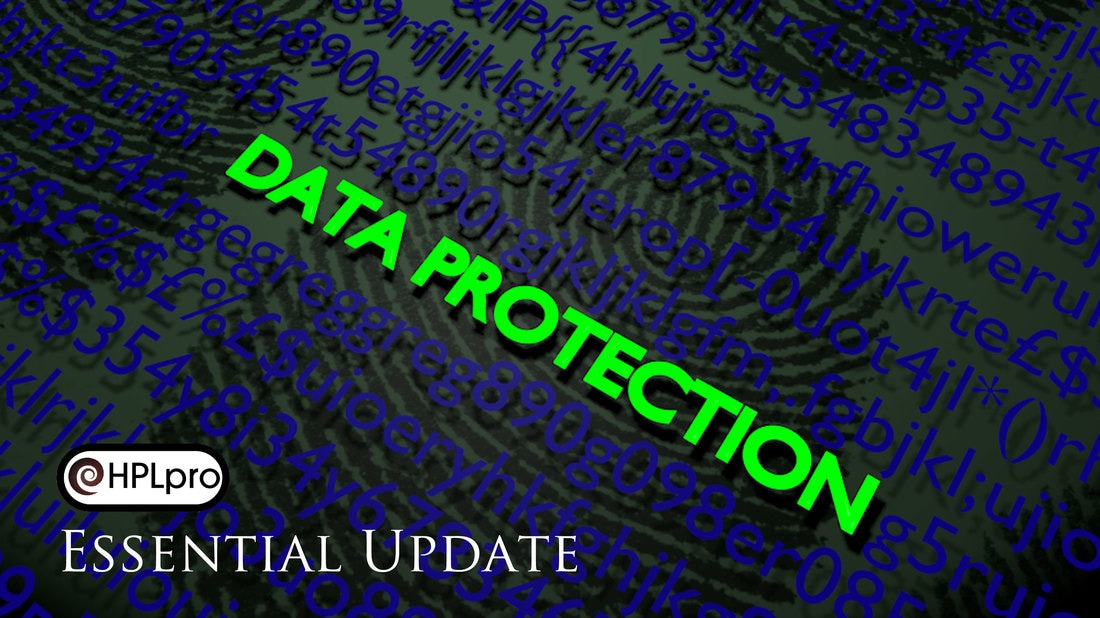
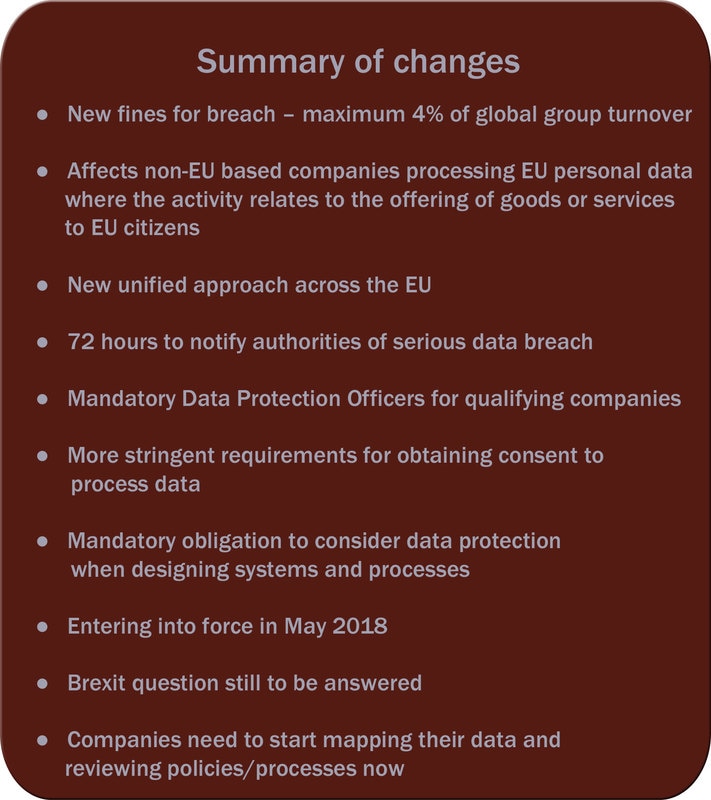
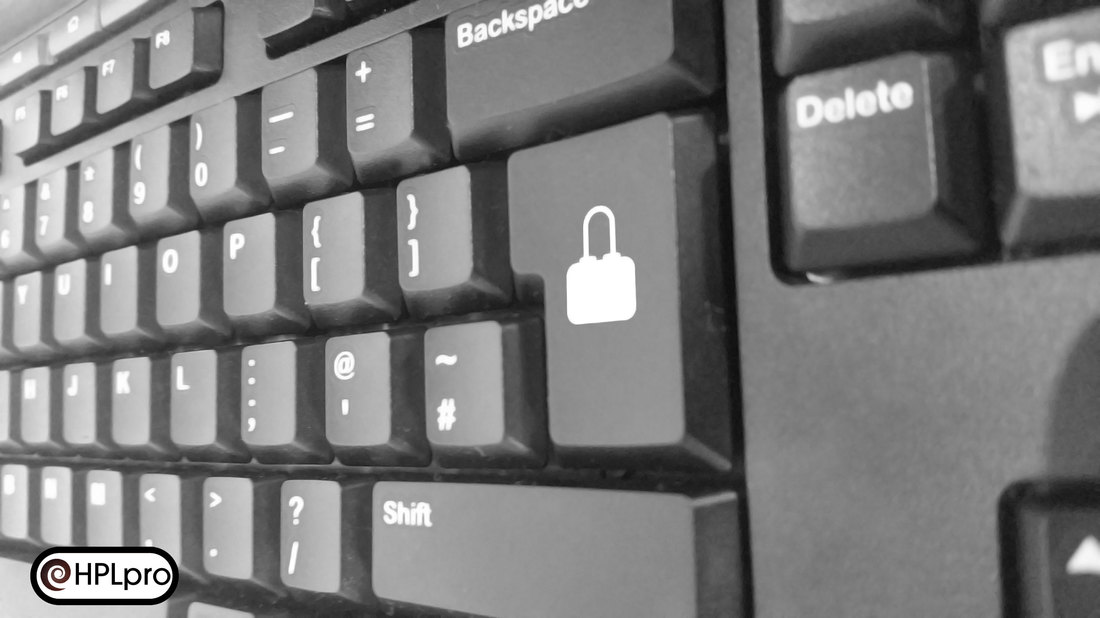
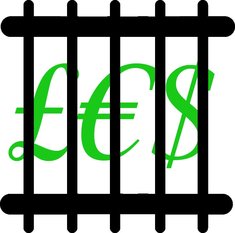
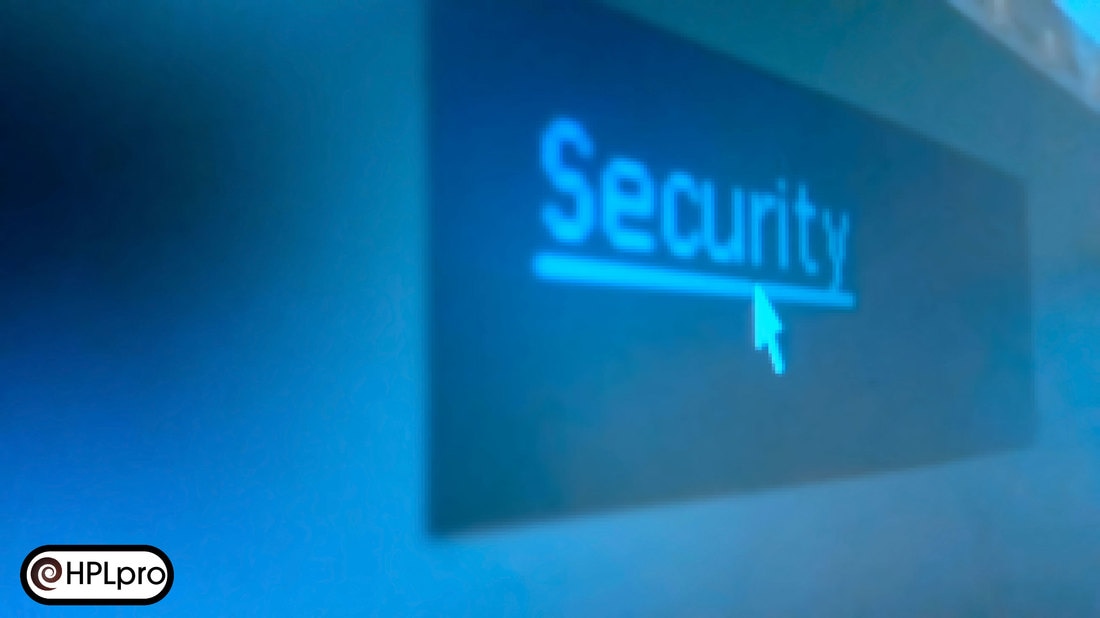
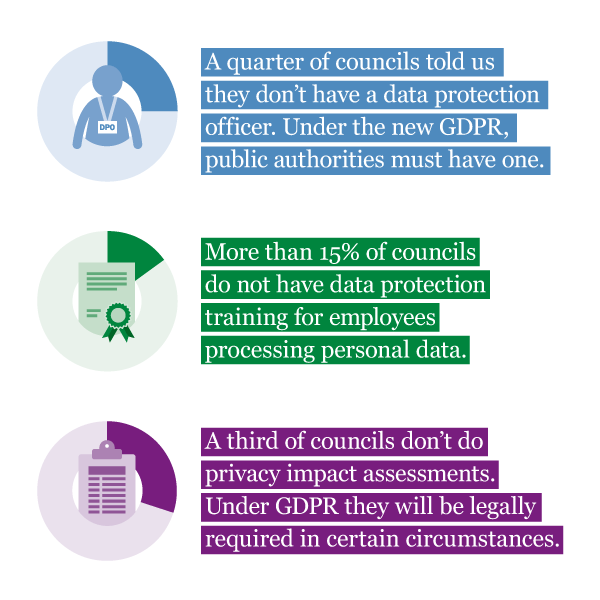

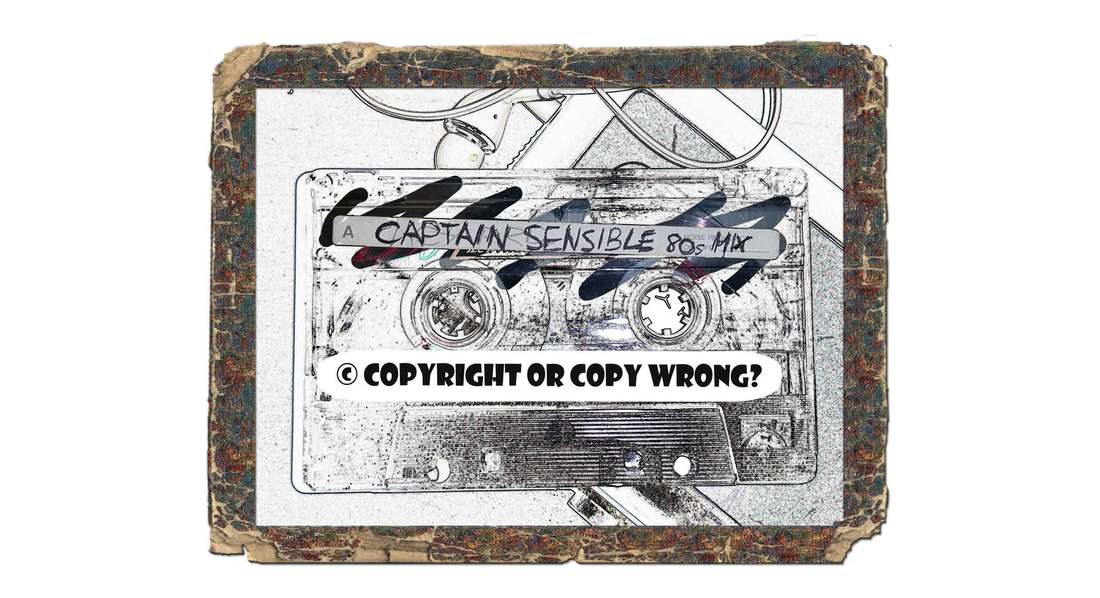
![THE TREE - [Explored]](https://c1.staticflickr.com/6/5066/5645289303_1d76da8550_n.jpg)












 RSS Feed
RSS Feed